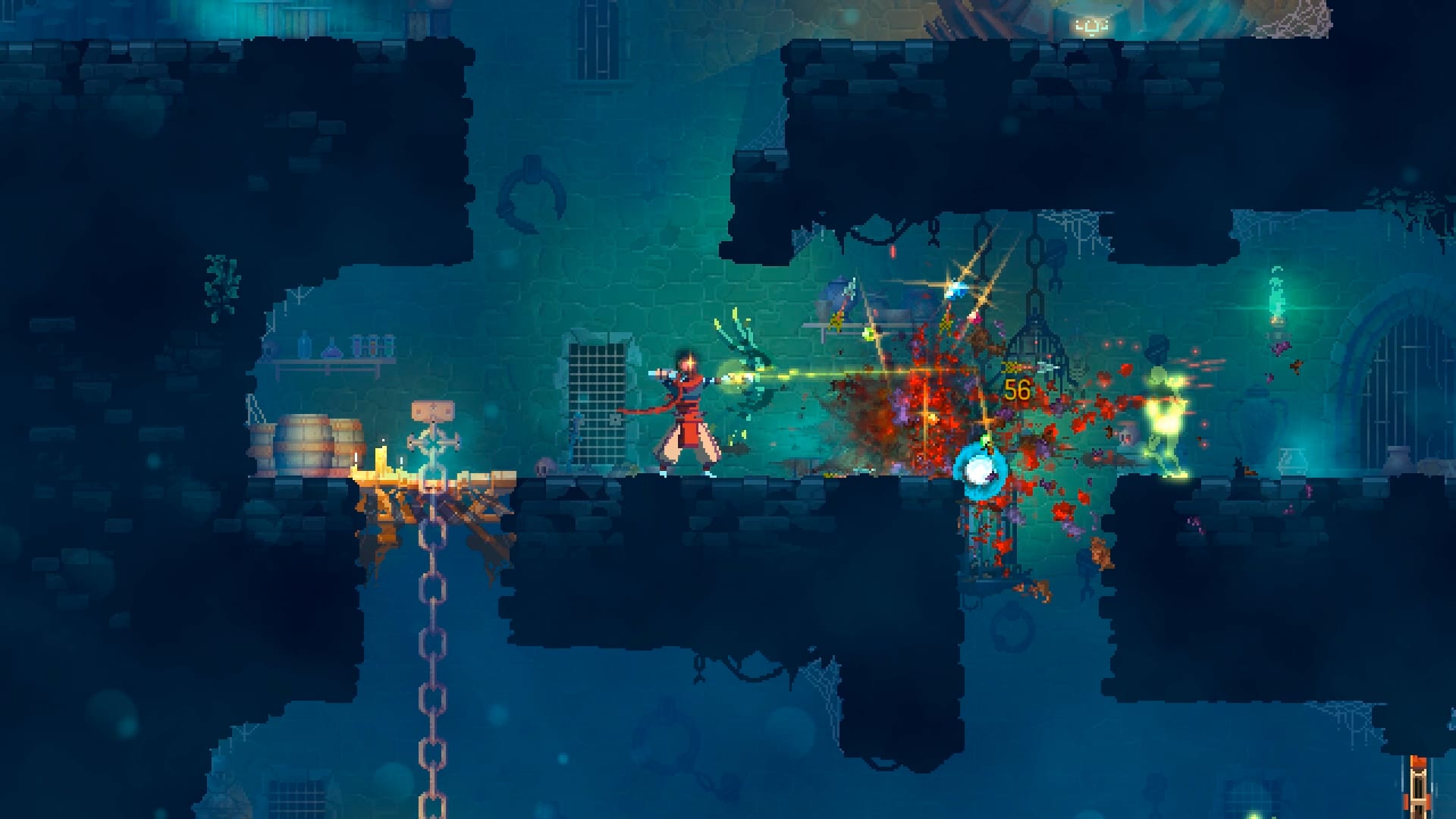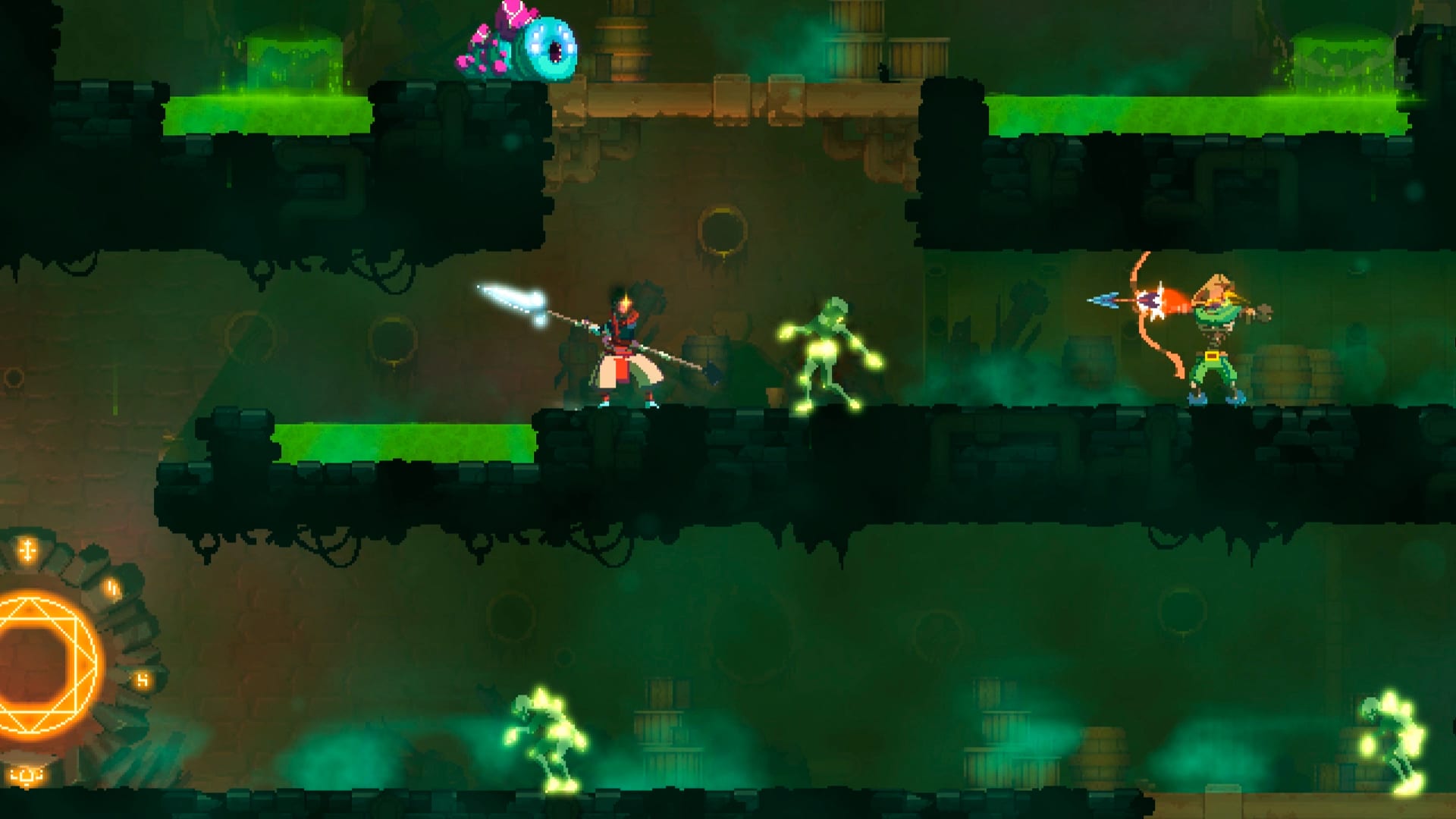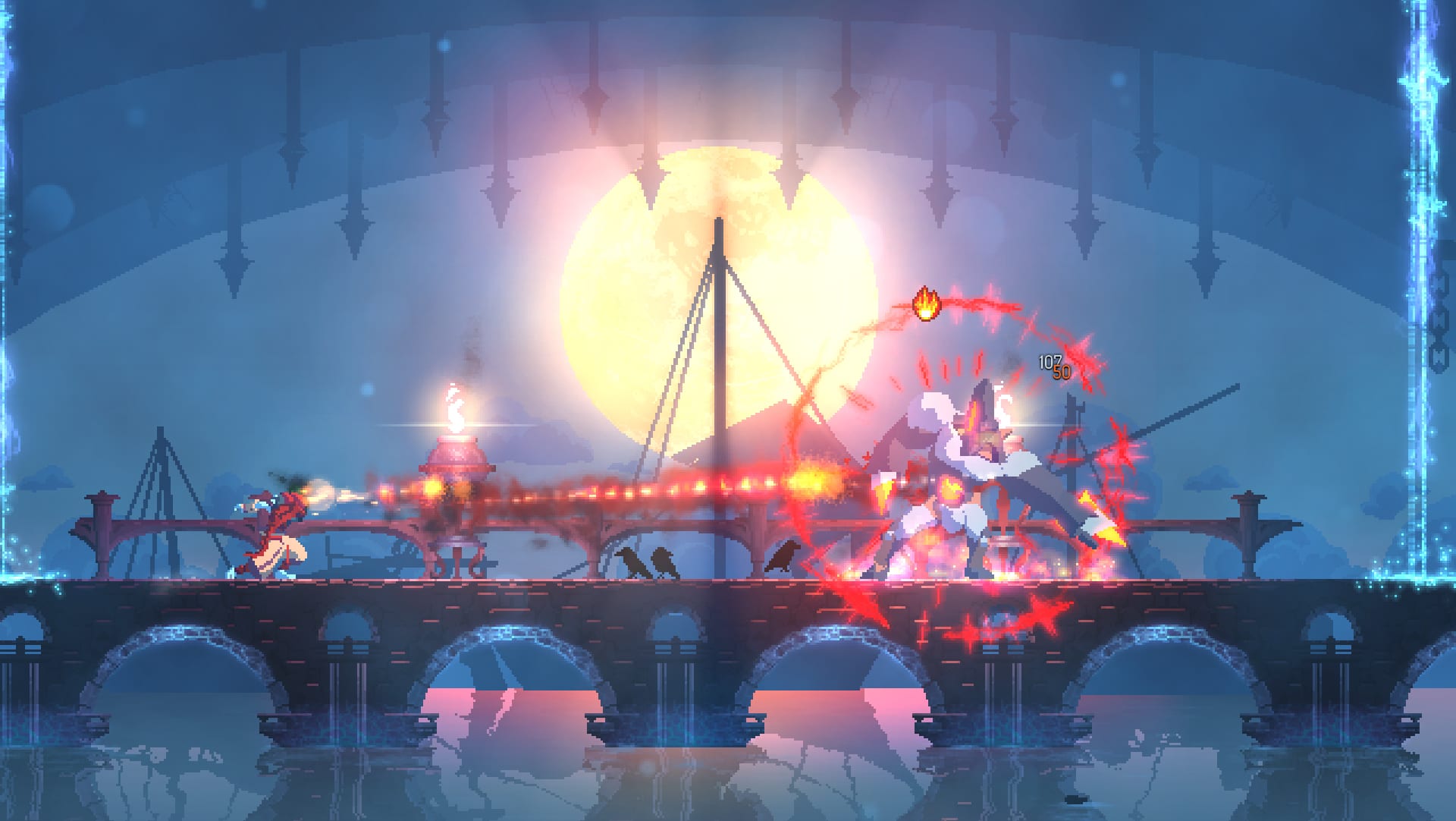Dead Cells Will Leave You Devastated – Review (PS4)
Roguelike, Soulslike, Metroidvania...like?
After entering Steam Early Access back in May 2017, Dead Cells has been a highly anticipated indie title from Motion Twin. With numerous roguelike games on the market, Dead Cells sets itself apart by incorporating elements from metroidvania and soulslike games. Drawing from numerous inspirations, Dead Cells presents refreshing and new ideas from mixing established genres. Though these ideas on their own can be unique and interesting, they don’t always mix together well and are set back by a huge difficulty spike.
The story of Dead Cells is minimal. Each time you play, a green blob falls from the top of the room and slides into a headless body, becoming the character which you play. In your first run, you come across a warrior who says you can’t die and that you’re not the first to find themselves in this situation. This is the only setup but, for a game focused on tight combat and exploration, not much else is needed. Lore can be found sprinkled throughout the levels, adding more context to the prison and surrounding areas in which you’ll find yourself.
One of the strongest aspects of the title is the art direction. The pixel art is is the perfect blend of retro and modern, and the color pallet pops off the screen with fiery reds and icy blues from the various weapons. Enemy animations are great as well, with essential visual clues to upcoming attacks. Each enemy type looks distinct and unique, making them easy to spot in order to react to their attack patterns.
Dead Cells uses procedurally generated levels with the exploration of metroidvania style games in mind. In effect, this means that each time you play you’ll have a new level layout before you – each of them with their own secrets, weapons and upgrade scrolls. Though you always start in the same prison, you can choose one of two levels you want to proceed to once you unlock some runes. These runes will open up the new paths and allow your choice, which can make for a nice change of pace.
Combat is the thing you’ll be doing the most, and it’s a high point for the game. Just like other great soulslike games, combat is always fair despite being punishing. Rolling and dodging around enemies is fast and fluid, and clearing a room without getting hit feels incredibly satisfying. There is a decent variety of weapons that change things up, such as quick dual daggers, and slow, but crushing hammers. Bows can be equally as deadly, giving you options for long range combat. Shields are a great choice for more defensive players who enjoy parrying. Picking up skills brings the combat to the next level, with auto arrow turrets and saw blade shooters that can be extremely useful in crowded rooms. Grenades also add variety with different elemental abilities such as burning flames, and freezing enemies with an ice grenade. Finally, powers add the most variety, like grappling hooks and even a “phaser” that auto teleports you behind the nearest enemy for a devastating attack.
You progress to unlock weapons and bonuses at the end of each level by using cells that have been dropped by killed enemies. Upgrades range from being able to save your money from previous runs, to having an extra health vial to use. Weapons are unlocked through blueprints found in the world, and then unlocked through cells. Though you may have a new weapon unlocked, you can’t actually choose to use it. New weapons give you a chance to find them in the world, either on the floor, in treasure chests and shops, or in secret rooms.
Progression overall can be very slow once you unlock the first set of upgrades and weapons. Each level can net around 10-30 cells depending on how many and what type of enemies you kill, and certain upgrades can cost up to 250 cells. In addition, blueprints for new weapons are rare. It’s unfortunate because there are so many interesting weapons and skills, but unlocking them can take a huge amount of time. For fans of grinding, this won’t be an issue. But for everyone else, expect a very slow drip of weapons and skills. You can plan to put in dozens of hours of grinding into unlock them.
With its often punishing combat, Dead Cells can also leave you devastated by its difficulty. It demands for you to learn its levels and enemies to a tee in order to progress and, even if you master those, the bosses can be incredibly tough. Where the game stands at odds with itself is when its soulslike difficulty meets its roguelike gameplay. Make one wrong move with a boss 25 minutes in or even end up cornered in a bad luck situation and it’s back to the very beginning. Sure, some players will be thrilled with a challenge like this, but the frustration of trying to learn a boss’ move set with 15-20 minute lead up can be infuriating.
Our recommendation: Dead Cells is a mashup of recent gaming trends that feels and plays great. It can be extremely challenging and frustrating with its combination of roguelike and soulslike natures. That challenge will feel like a strength to some players, and a glaring fault to others. Its variety of weapons and play styles change things up and can keep it fresh, but be prepared for a long haul of what can feel like repetitive grinding when it comes to unlocking more. Dead Cells feels like it’s better played in 1 to 2 hour bursts to keep gameplay from feeling repetitive
*Dead Cells was provided to the reviewer by the publishing company but this fact did not alter the reviewer’s opinion*
Check out our Review Guide to see what we criteria we use to score games.





